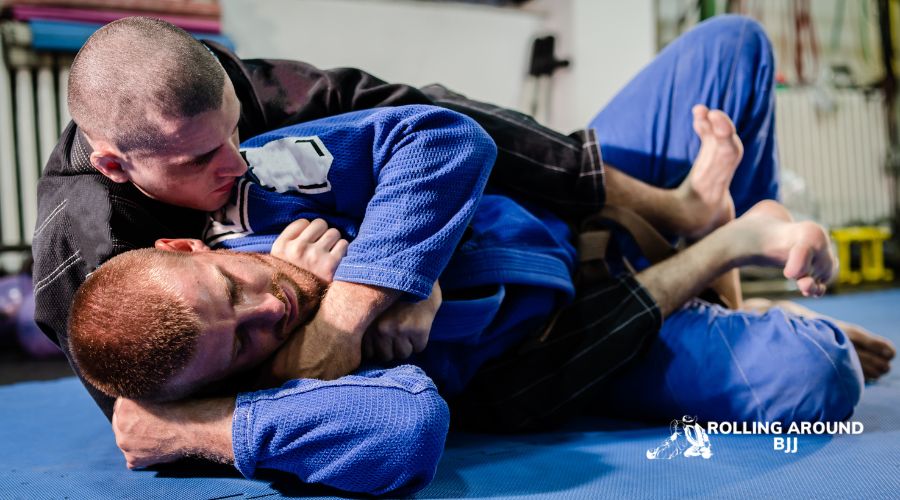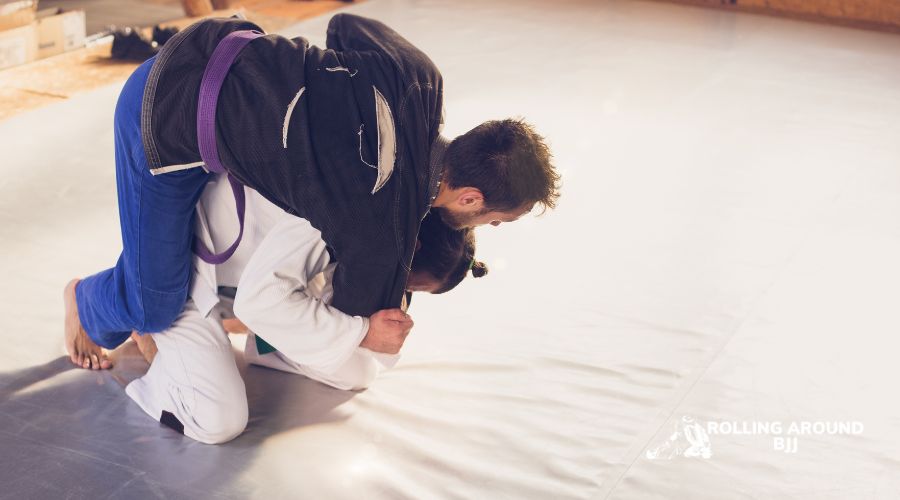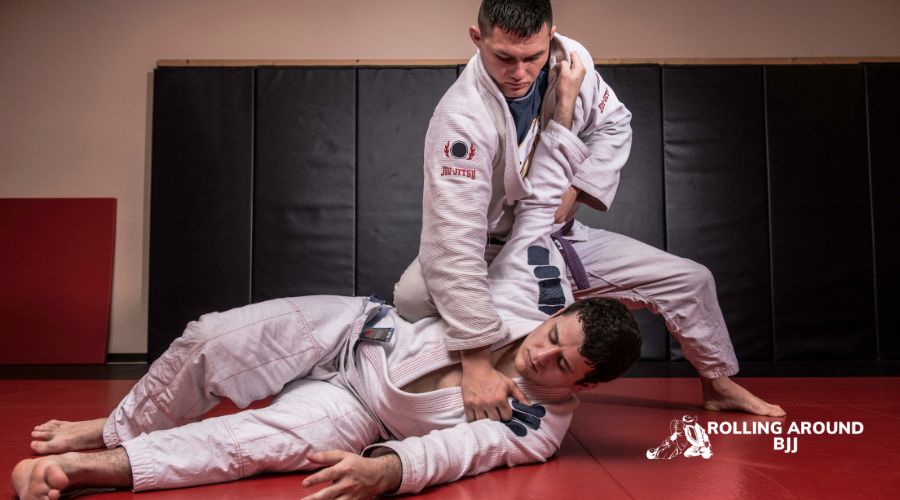Anyone even remotely interested in BJJ and martial arts has heard of the Gracie family and probably knows their role in creating and spreading the style. This is why it may be confusing when you notice some academies marketed as Gracie Jiu-Jitsu while others simply as Brazilian Jiu-Jitsu. So, what is the difference?
Gracie Jiu-Jitsu is a part of Brazilian Jiu-Jitsu, focusing first and foremost on applying the art in a real fight situation. On the other hand, Brazilian Jiu-Jitsu is the blanket term for all variations of the martial art, but it’s usually used to describe the mainstream sports version.
If things are still unclear, this article will clarify the differences between BJJ and GJJ and give you a better idea of which brand of jiu-jitsu may be best for your journey.
Brazilian Jiu-Jitsu vs. Gracie Jiu-Jitsu: What’s The Difference?
First, let’s start by saying Gracie Jiu-Jitsu is Brazilian Jiu-Jitsu because it was created and developed in Brazil, but not all Brazilian Jiu-Jitsu is Gracie Jiu-Jitsu.
The main difference between the two from today’s standpoint is that Brazilian jiu-jitsu is a blanket term for all styles, while Gracie Jiu-Jitsu is a sub-brand and the name used by members of the Gracie family for their schools. It refers to the traditional style used by the family for no-holds-barred fights and is still taught today.
There is a significant overlap between the two, with the name being the biggest difference, but the main objectives, techniques, and training methods also vary. I am sure you’ve heard the Gracie family invented and spread jiu-jitsu, so having a different brand with their name sounds confusing, and it is. Let’s clear things up.
What Is Gracie BJJ?

To answer this, let’s take a brief history lesson. Brazilian jiu-jitsu was conceived in the early 20th century when Japanese judoka, jiu-jitsu, and catch-wrestling master Mitsuyo Maeda traveled to Brazil and began teaching pupils.
The two most prominent ones we are interested in are brothers Helio and Carlos Gracie, who took the knowledge and skills but focused more on the ground techniques rather than the throws and pins judo and wrestling are known for.
The culture of BJJ was founded on live sparring training and constant fights with limited or no rules at all, where strikes and slams of all kinds were allowed. Because of this, BJJ revolved around winning fights, not being a grappling-only contest, and this mindset is still the main motto of Gracie Jiu-Jitsu today.
The Gracie clan is a big family, and many members taught jiu-jitsu in Brazil. But it was when Helio’s son Rorion moved to America to popularize the family martial art that things got complicated with the name.
Rorion obtained the trademark for Gracie Jiu-Jitsu and prevented even other family members from using the name and the logo. This led to legal battles among family members.
Most academies can trace their lineage to Gracie. Still, non-Gracie members began labeling their art and schools Brazilian Jiu-Jitsu as a blanket term to avoid being sued by Rorion. Even some Gracie family members were forced to add their first names to avoid legal trouble.
Today, when you see the name Gracie Jiu-Jitsu at an academy, it is still connected to the school of Rorion. Still, the prominent figure behind this is his son Rener, who created Gracie University.
The knowledge and skills under the Gracie University and Gracie Jiu-Jitsu banners still follow the approach of Helio and focus on self-defense and real-life fighting applications first and foremost.
While most academies can trace their lineage back to the Gracie family, they are not the only ones. A man named Luis França also studied under Mitsuyo Maeda and passed his knowledge through a different lineage, found today in academies like Nova Uniao and GFTeam.
Then others, like the Machado brothers, have also put their twist on BJJ and used their name as a sub-style of BJJ.
Hopefully, this clears up any confusion about the names and brands, so it’s time to see the differences between BJJ and GJJ.
Objectives

The main objective of Gracie Jiu-Jitsu is to prepare you for a real fight with no rules or a self-defense situation. At the same time, most other Brazilian jiu-jitsu academies focus on the sports aspect, which is much more mainstream today. This key separation strongly determines the techniques used and the type of training performed.
With that said, the distinction is never so clear-cut. Many non-Gracie academies have self-defense classes, and all Gracie academies also prepare BJJ competitors.
This means there is an overlap between gyms, with the difference being that the main focus will be on one of the two aspects.
Techniques In BJJ and GJJ
Given the different objectives of Gracie BJJ and competition jiu-jitsu, the techniques utilized differ. While the basic guards, submissions, sweeps, and main positions are the same, it must adhere to three rules for a technique to be viable for GJJ. It must be energy efficient, use natural movements most people can do, and be applicable in a real fight.
Almost all moves found in any form of BJJ are energy efficient, but still, self-defense jiu-jitsu wants you to be able to beat bigger opponents without training like a professional athlete, meaning you need to conserve your energy and not tire before the opponent.
In fact, one of the ways to defeat stronger opponents is by letting them fatigue and then overcoming them afterward.
The second filter deals with the complexity of the modes. Some of the high-level techniques used in competition are out of reach for the average human due to flexibility, agility, or strength deficiencies, making them unsuitable for GJJ.
But the third rule is where the biggest differences lie. Removing all striking from BJJ competition eliminates the need for positions and techniques to respond to such dangers in the first place.
The ever-evolving tactics used in the highly competitive BJJ world led to the exploration and creation of many techniques and positions suboptimal for a fight, where you can get punched, elbowed, or kicked in the head.
This result is an entirely new arsenal of attacks, defenses, and counterattacks used solely for sports BJJ. It is not found in Gracie Jiu-jitsu because they are too flashy, unnecessary, or outright dangerous in a real fight. Think of things like flying armbars, triangles, rubber guards, etc.
This does not mean GJJ does not evolve, but it’s much more conservative because it has to apply to a real fight where the danger is greater. In contrast, BJJ is evolved by generations of coaches, competitors, and average practitioners participating in BJJ competitions.
In summary, all GJJ techniques are part of BJJ, but not the other way around.
Indented Opponents
Gracie Jiu-Jitsu teaches you to defeat attackers through leverage, body mechanics, and techniques. Often, the possible enemy is untrained, presumably with a weight advantage. He can be armed, skilled, or unskilled. Most newcomers to GJJ start by learning how to beat bigger but untrained people.
Later in the curriculum, they learn to deal with more experienced fighters from different styles, including other proficient grapplers.
On the other hand, Brazilian Jiu-Jitsu still teaches essentially the same principles by using technique and leverage. Still, the opponents are usually in the same weight class and have similar BJJ skill levels. The tactics and moves used aim to counteract other relevant grappling strategies.
Which Should I Choose BJJ or GJJ?

The clear-cut answer depends on what you value more: performance in BJJ competitions or real-life applications. Go for Brazilian Jiu-Jitsu if you pursue the first, and for Gracie Jiu-Jitsu if you pursue the second. But few things in life can be answered so easily, and this question is not one of them.
The quality of your training highly depends on the instructor, the academy, and your personal investment. As I’ve said in the beginning, many bigger academies have self-defense classes, and even the most conservative Gracie academy will have classes focused on sports BJJ.
Otherwise, people like Kron, Roger, and Royler Gracie wouldn’t be able to become world champions in sports BJJ.
It all depends on what you are looking for. The Gracie name has a well-deserved reputation, and if you want to focus on the original goal of this martial art and excel in self-defense applications, choose a Gracie Jiu-Jitsu gym if it’s available to you in the first place. A normal BJJ gym would be a better option if your main goal is competition success.
More likely than not, you will want to learn some of both. I have yet to meet someone who does not want to be at least partially a well-rounded martial artist, and you may even switch your primary focus from time to time from self-defense to sports or the other way around.
All of this leads to the conclusion that while the objectives, focus, and methods of GJJ and BJJ are different, the reality is both will likely teach you some self-defense and some sports BJJ, meaning the most significant differences between the two are branding and marketing more than anything else.
